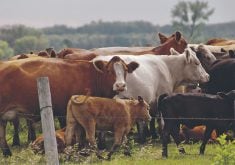The hype surrounding functional food is huge but maddeningly vague. Supposedly, there’s a horde of people, notably aging baby boomers, eager to spend billions on foods with healthy properties.
How many billions? Who knows. What kind of foods? Hard to say. How might farmers actually get in on the action? Hmmm, we’ll get back to you on that one.
But before writing off functional foods as an opportunity, listen to Jerry Bigam, chief executive officer of Kinnikinnick Foods, an Edmonton company that makes gluten-free bakery products. In the past decade, sales have grown 50 to 80 percent a year, rocketing from $250,000 to millions annually.
Read Also

Canadian farmers need new tools to support on-farm innovation
Farmers need a risk management buffer that actually works and investment that drives advancements forward if Canada is to build resilience.
But there are other noteworthy
elements of the Kinnikinnick story. One is that many of its customers didn’t know they could benefit from gluten-free foods until they became available, and another is how important these foods have become to them.
“There’s an awful lot more to diet and some of these specific health conditions than we’ve realized,” Bigam said. “We’re just beginning to sort out some of these relationships.”
The company, whose website is www.kinnikinnick.com, began with a simple plan, to help people with celiac disease, which affects about one percent of the population. In sufferers, gluten harms the surface of the small intestine, reducing the body’s ability to absorb nutrients. It can cause problems ranging from migraines and diarrhea to severe weight loss and fatal complications.
It’s notoriously hard to diagnose for the simple reason that individual celiac symptoms are the same as many other conditions. Bigam’s wife suffered for nearly 20 years before she was diagnosed.
Although Bigam, a semi-retired food industry executive, came to Kinnikinnick as a customer, he was brought in by founder Ted Wolff von Selzam to help build the company. And he did. Key was perfecting a courier-delivery system that gets its preservative-free baked goods in customers’ hands within 48 hours. Bigam also expanded its market reach across North America, although at first, he joked, he only had two customers in each American state.
As business boomed, Bigam was surprised to find how many of his customers weren’t celiac sufferers. People with autoimmune conditions such as multiple sclerosis and Crohns disease were buying.
Perhaps most surprising were the benefits of gluten-free products for autistic children. The link between gluten and celiac disease is well known, but not with these other conditions.
Still, these people became loyal customers for a simple reason: when they switched to a gluten-free diet, they felt better.
“God bless you. You have given my daughter back to me,” wrote one mother who saw her autistic daughter go from beating her head on the floor to being a radically different person after going to a gluten-free diet.
“When you see what happens with autistic kids when you just simply change their diet, you’ve got to think, ‘man, diet has a much bigger impact than we’ve realized,’ ” Bigam said.
Not every functional food has this kind of dramatic effect. But consider the adage that without your health, you have nothing. This is the power of functional food. It’s why someone in Arkansas or New Mexico pays $5 a loaf (plus shipping) for bread from some little company way up in
Edmonton.
So how do farmers take advantage of this trend? Bigam doesn’t have easy answers, but urges farmers to look for scientific support for truly functional foods.
“That’s not an easy thing to do,” Bigam said. “For example, there’s obviously a big market for diabetic foods and that market is going to continue to grow. The question is how do you approach that? What kind of products should a farmer grow?”
Do an internet search for diabetes and you soon learn about something called low glycemic index foods. For kidney disease, it’s low protein foods. Our growing understanding of cancer and allergies is yielding new insights into diet, creating demand for specific foods grown under exacting identity preserved systems.
You’re going to hear a lot more about functional food in the coming years, and it would be wrong to assume these are niche markets with tiny growth potential.
In 1991, Wolff von Selzam took a few loaves of bread made from rice and potato flour to an Edmonton farmers’ market. Countless loaves later, the future of Kinnikinnick and the rest of the functional food industry is just getting underway.
Glenn Cheater is editor of Canadian Farm Manager, the newsletter of the
Canadian Farm Business Management Council. The newsletter as well as archived columns can be found in the news desk
section at www.farmcentre.com.














